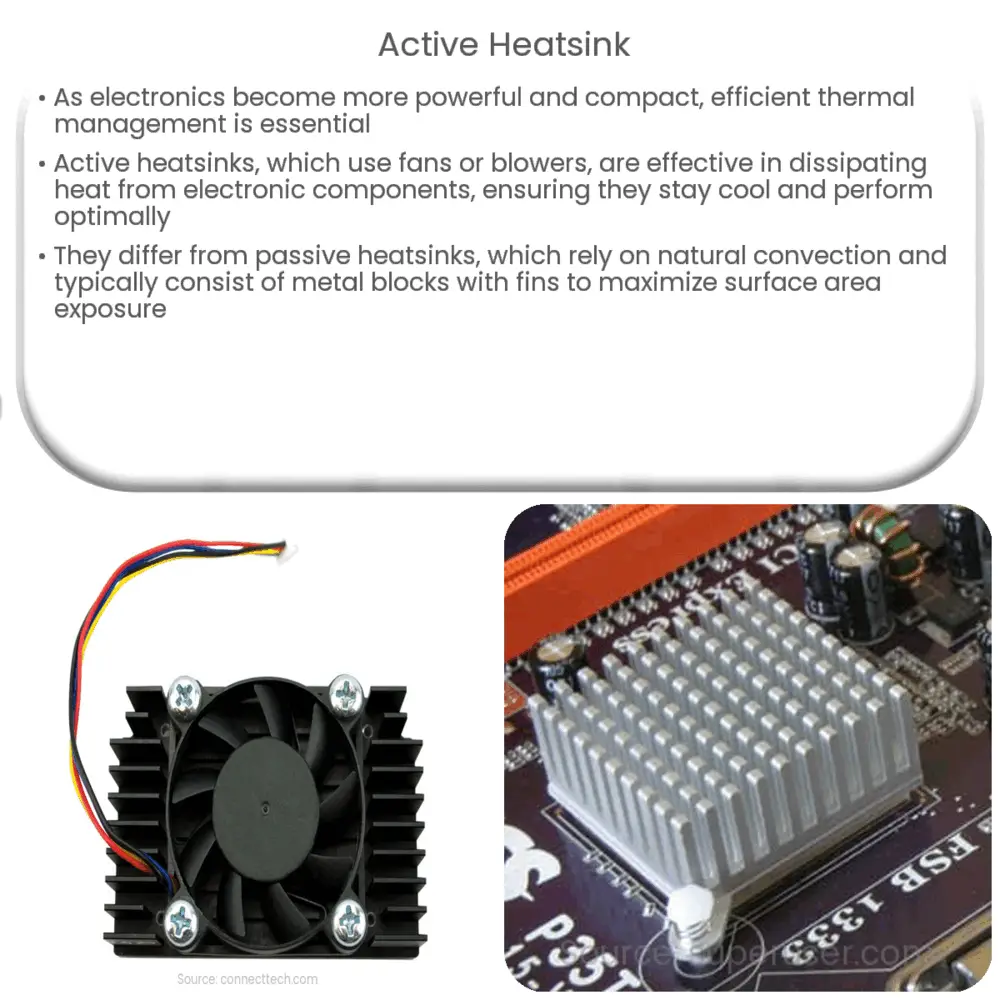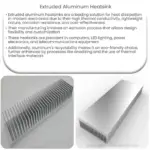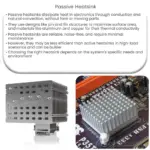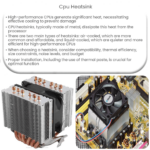Passive heatsinks rely solely on the natural process of convection for heat dissipation. They typically consist of a solid block of metal, usually aluminum or copper, with an array of fins or other structures designed to maximize the surface area exposed to the surrounding air. The heat generated by the component is conducted through the metal and eventually radiated into the environment. Passive heatsinks do not require any additional power source, making them quiet and energy-efficient. However, their cooling capacity is limited by the ambient air temperature and airflow in the system.

Active Heatsink: A Comprehensive Guide to Efficient Thermal Management
Introduction
As the world of electronics continues to evolve, devices are becoming more powerful, compact, and energy-efficient. Consequently, managing the heat generated by these devices is becoming increasingly important. Active heatsinks offer a highly effective solution for thermal management, ensuring that components remain cool, reliable, and efficient. This article will provide an in-depth look at active heatsinks, their benefits, and how they differ from passive heatsinks.
What is an Active Heatsink?
An active heatsink is a thermal management device that utilizes fans, blowers, or other active cooling components to dissipate heat generated by electronic components, such as CPUs, GPUs, and power supplies. By actively circulating air over the heatsink’s surface, an active heatsink can efficiently transfer heat away from the component, preventing overheating and maintaining optimal performance.
Active vs. Passive Heatsinks
Heatsinks can be broadly classified into two categories: active and passive. While both types are designed to dissipate heat, they differ in their approach and efficiency.
Passive Heatsinks
Passive heatsinks rely solely on the natural process of convection for heat dissipation. They typically consist of a solid block of metal, usually aluminum or copper, with an array of fins or other structures designed to maximize the surface area exposed to the surrounding
Active Heatsink: A Comprehensive Guide to Efficient Thermal Management
Introduction
As the world of electronics continues to evolve, devices are becoming more powerful, compact, and energy-efficient. Consequently, managing the heat generated by these devices is becoming increasingly important. Active heatsinks offer a highly effective solution for thermal management, ensuring that components remain cool, reliable, and efficient. This article will provide an in-depth look at active heatsinks, their benefits, and how they differ from passive heatsinks.
What is an Active Heatsink?
An active heatsink is a thermal management device that utilizes fans, blowers, or other active cooling components to dissipate heat generated by electronic components, such as CPUs, GPUs, and power supplies. By actively circulating air over the heatsink’s surface, an active heatsink can efficiently transfer heat away from the component, preventing overheating and maintaining optimal performance.
Active vs. Passive Heatsinks
Heatsinks can be broadly classified into two categories: active and passive. While both types are designed to dissipate heat, they differ in their approach and efficiency.
Passive Heatsinks
Passive heatsinks rely solely on the natural process of convection for heat dissipation. They typically consist of a solid block of metal, usually aluminum or copper, with an array of fins or other structures designed to maximize the surface area exposed to the surrounding




